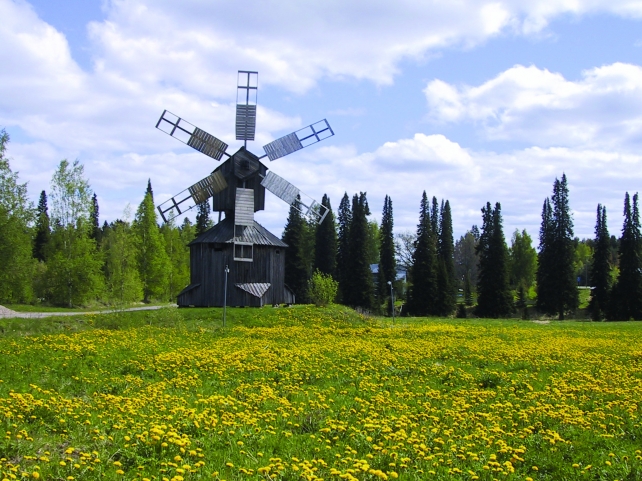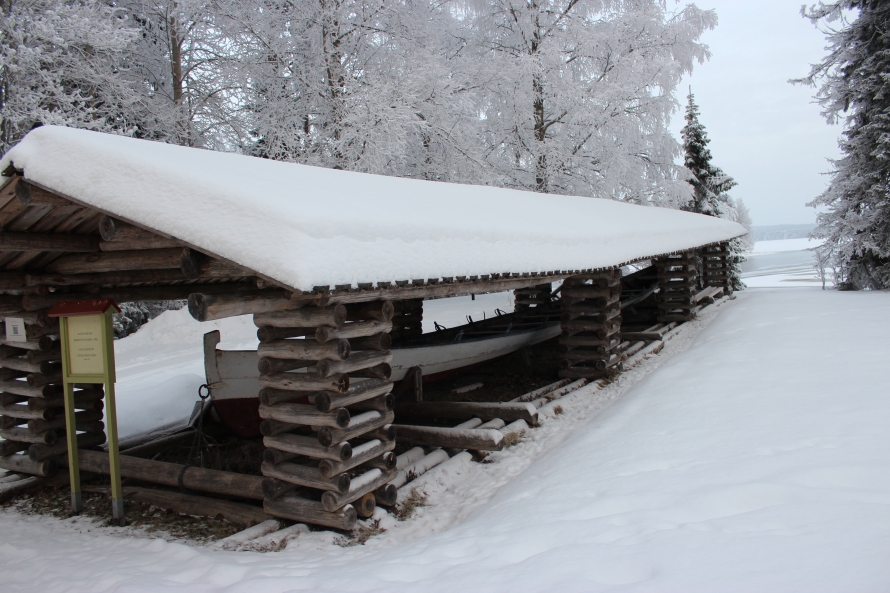
Virrat Heritage Village is a museum and travel destination for the whole family as well as a summer recreational area on Marttinen island, full of natural beauty. The Heritage Village is located in the immediate vicinity of Youth Centre Marttinen.
In Rajalahti House Museum and in Hali Loggers’ Cabin you can explore rural life in Virrat at the turn of the 19th and 20th centuries and the everyday life of loggers and forest work in the 1950s and 1960s. The Heritage Village also has many other old buildings, such as stables (1820s), a smock mill (1828), a smoke sauna (1840s) and a village storehouse (1878). In addition, there is a War veteran museum presenting 20th century war history and the Canal Museum maintained by the Transport Agency.
The museums in the Heritage Village are open for groups upon request around the year.
In the summertime, events and exhibitions are organised in the Heritage Village. The area has a café-restaurant, kiosk, handcraft, gift and art shops, a playground and Herraskoski canal.
You can book accommodation, restaurant, café and programme services from Youth Centre Marttinen, and you also have free use of the beach, guest boat dock, nature path and field fortification area from World War I.

The church boat was last rowed in the summer of 1980, when it was brought to the Heritage Village.
The church boat house was finished in 1981. In the boat house is church boat Koro that was built in 1902 and that made its last rowing journey in the summer of 1980, when the boat was brought to the Heritage Village. Koro was accompanied by Koro II, which is the exact copy of its predecessor.
Church boat Koro is 17.5 metres long and has ten pairs of oars. The boat carries approximately 45 people, but it is said that there have been even 70 people on the boat in special circumstances.
Koro is not the largest church boat in Virrat by far. In Seurasaari Open-Air Museum in Helsinki, there is a church boat from Ikkala village in Virrat that is 21 metres long with 14 pairs of oars: the boat had space for 60–70 people. The boat was built in 1897.
In lake and waterway areas it used to be common that the villages behind the waters formed so-called church boat associations that built a church boat together. Bigger houses provided construction material and smaller houses workforce. Each house had a right to the boat spaces according to how the house had participated in the building.
Church boats were usually made sleek and high-speed, as the custom was that the boats would compete with each other on the way home. When going to church, competing was absolutely forbidden. The farmers’ wives would sacrifice kilos of butter to be spread on the bottom of the boat so that it would go as smoothly as possible – or at least this was the belief. There was not always a clear winner in the rowing competition, and we know that when enough badmouthing had been done between the boats, the teams would get on land to finish the business. Later they would settle who had hit whom and what they needed to pay at the village court.
The church boat was an important means of transport for the villages behind the waters, as the connections via land were long and difficult. The journey to church was not just for the mass but you could run other errands at the same time – do business, meet friends and relatives, check out potential spouses and exchange news. Not everyone was able to go on the church trip every time, as it would be a long journey even with the boat. Those who lived far away would have to go to the boat shore or to church already on Saturday, where they had to stay the night somewhere. From the back of Toisvesi, people would set off for the church journey with a steamboat at 3.30 in the morning.
Virrat Heritage Village
Herrasentie 16
34800 Virrat
p. +358 (0)3 485 1900
perinnekyla@marttinen.fi
Accommodation, restaurant and programme services for groups upon request.
 Marttinen is one of the nine centres supported by the Finnish Ministry of Education and Culture.
Marttinen is one of the nine centres supported by the Finnish Ministry of Education and Culture.
Read more on the websites of Finnish Youth Centres Association